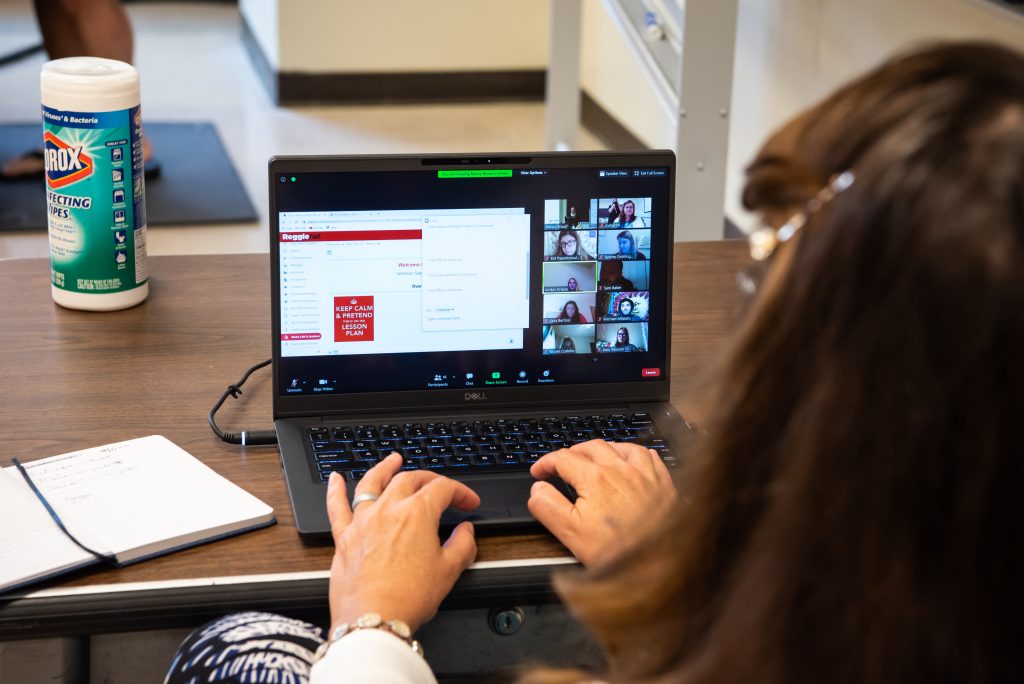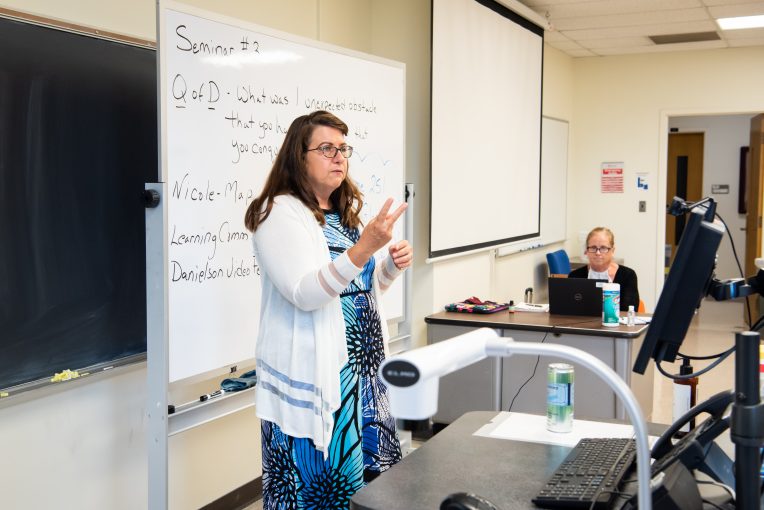By early March, it was becoming apparent that the threat posed by coronavirus (COVID-19) was going to massively impact the lives of every person on the planet. Businesses sent their employees home to work or closed altogether. Bars and restaurants shut their doors for months. All major sports leagues ceased operations. Concerts, plays, and comedy shows were canceled or postponed to an unknown later date.
Higher education was no different. On March 11, Illinois State University extended spring break for an additional week and transitioned to online learning when students returned on March 23.
Thankfully, our tech community was ready.
“For the past five years, we have been preparing for a disaster,” said Charles Edamala, associate vice president of Technology Solutions and chief information officer. “We were preparing for something like a tornado or, due to our proximity to the railroad, a chemical spill, not a pandemic. But we have been preparing for a situation where learning has to be taken off campus.”
Even with a network prepared for more users, there was still a lot of work to be done. ReggieNet, Illinois State’s learning management program, needed to be optimized and ready for a student body of 20,000-plus learning remotely. Illinois State already had a license with Zoom, the now ubiquitous video-conferencing software, but not enough licenses for every person on campus. Many students primarily use their phones for personal internet access and on-campus computer labs for schoolwork. Those students needed laptops provided to them. Computers required maintenance, so there had to be a process in place to make sure students could get laptops repaired and returned to them safely in the event of a problem.
“We couldn’t do this five, 10 years ago,” Edamala said. “The technology wasn’t there. There were video-conferencing services, but nothing like Zoom. And most people didn’t have access to internet fast enough to support it.”
Technology Solutions was able to solve these problems and more without major disruptions. Still, there were lessons to be learned. Illinois State spent the summer assessing its response to the crisis and what things needed to be done to create a better experience in the fall.
“There are a lot of forward thinkers in technology,” said Dr. Rosie Hauck, executive director of the Office of Advanced Technology Support for Faculty. “They are always running exercises to make sure there is always a contingency plan in place.”
At many times during the summer months, new developments related to COVID forced the University to make changes to course modalities, making it hard to know ultimately how many classes would be online, in-person, or hybrid. As a result, Technology Solutions ensured every classroom was outfitted with the technology needed for faculty to deliver their classes in all these ways. More laptops were needed for students and faculty. Online video conferencing requires a strong and stable internet connection, which necessitated a further strengthening of Illinois State’s Wi-Fi network. All of this needed to be done quickly as universities across the nation were looking to obtain the same technology and hardware wasn’t in infinite supply. All of this makes for a significant financial investment.
“The current known and planned costs are in the neighborhood of $1.7 million,” Edamala said.

All classrooms needed to be equipped with the necessary technology to teach online and hybrid formats.
Technology is only as good as a person’s ability to use it, so emphasis was placed on increasing faculty support. In the spring, the rapid move to online learning forced faculty to teach with platforms some of them had never used.
“Providing that support was definitely the most difficult part of the spring experience,” Hauck said. “You had faculty that taught 100 percent face-to-face getting online and saying, ‘I’m online, what do I do?’”
That is where the Center for Teaching, Learning, and Technology (CTLT) came in. Dr. Jennifer Friberg, CTLT interim director, and the CTLT staff, spent the summer helping prepare faculty for a fall semester that promised to look very different from what had come before.
“Our vision was that no matter what the fall looked like, instructors would be ready to teach,” she said.
CTLT staff pulled together to create a series of professional development courses and learning modules for instructors.
“We had courses for how they can teach through ReggieNet and via Zoom and how they could integrate Microsoft Teams and other kinds of software into their teaching,” she said. “Staff engaged in consultations and delivered workshops on how to design courses and integrate high impact practices like civic engagement and student research into their teaching, even in times when it is not easy to do that.”
The response from faculty was overwhelmingly positive. CTLT reported that 300 percent more faculty engaged with professional development courses this summer than last. Friberg said the enhanced level of preparation has helped faculty expand their offerings and design more nimble courses for the fall.
“When folks were putting together their course syllabi in December or January, no one imagined that eight weeks later we’d have a global pandemic that would necessitate a shift to a completely remote environment,” Friberg said. “We have been providing resources to help them build courses with online learning in mind.”
In addition to their other roles, Hauck and Friberg teach courses in business information systems and communication sciences and disorders, respectively. Hauck has been piloting different technologies in her class to possibly bring to a wider campus audience. Friberg said she finds herself checking in with her students even more online than she did during face-to-face instruction. Both admit that the adjustment hasn’t always been easy but are optimistic about the innovation they are seeing in the face of this crisis.
“If there is a silver lining to be found through this experience, it is that it has opened up opportunities to look differently at how we do business,” Friberg said. “Maybe the new normal is that there is more of a mix of face-to-face and online education. If that is the case, this is our opportunity to figure out how to do that well.”

